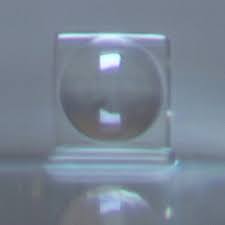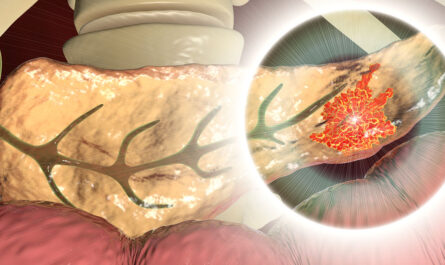Researchers at Georgia Tech have developed a new technique for 3D printing small glass lenses and other structures at significantly lower temperatures and faster curing times. By using ultraviolet light instead of extreme heat, the team was able to reduce the required heat for converting printed polymer resin to silica glass from 1,100°C to just 220°C. Additionally, the curing time was shortened from over 12 hours to only five hours. The new process holds great potential for medical devices and research applications.
Led by Professor H. Jerry Qi from the George W. Woodruff School of Mechanical Engineering, the team outlined their approach in the journal Science Advances. The method showcases the ability to fabricate ceramics at milder conditions, as silica is a type of ceramic. Prior to this breakthrough, achieving lower-temperature fabrication of ceramics had been a challenging task. The interdisciplinary team comprising experts from chemistry and materials science utilized a data-driven approach to expand the boundaries of ceramic production.
One of the key applications for 3D-printed glass microstructures is in the miniaturization of lenses for medical endoscopes. These tiny lenses, measuring approximately the width of a human hair, could be employed in medical imaging procedures within the human body. Additionally, the glass structures could also be used to create microfluidic devices, which resemble small computer chips and feature nano- or microscale channels used for studying cells or biofluids in motion. Glass chips would offer advantages over current polymer-based chips, as they would be more resistant to corrosion from chemicals or body fluids.
Moreover, the low-temperature process could enable the fabrication of glass structures for microelectronics. Traditional semiconductor materials used in microelectronics cannot withstand high temperatures, so the ability to print directly onto a board at lower temperatures, around 200°C, is a significant advancement. Mingzhe Li, the first author of the study, emphasized the benefits of this technique in directly integrating glass structures into microelectronics.
From an environmental standpoint, the team’s printing process is much more sustainable compared to traditional glass manufacturing methods. Conventional additive manufacturing processes for glass involve polymer mixtures that must be burned away with heat once the desired shapes are formed. The Georgia Tech team’s approach utilizes a photoresist that can be converted to glass using deep ultraviolet light. This eliminates the need for excessive heat, reducing energy consumption. Additionally, the absence of extra polymer material makes the process more resource-efficient.
To achieve their results, the researchers used a light-sensitive resin based on a commonly used soft polymer called PDMS. Unlike other 3D printing methods, their approach did not require the addition of silica nanoparticles to the mix. As a result, the printed glass lenses were highly transparent and exhibited a similar smoothness to commercially made fused silica glass. This eliminates potential optical issues associated with added nanoparticles.
Overall, the new approach developed by the Georgia Tech research team has the potential to revolutionize 3D printing of glass microstructures by enabling low-temperature fabrication and faster curing times. The applications for this technique extend to medical devices, research, microfluidic devices, and microelectronics. With the added benefit of being a more sustainable process, this innovation could significantly impact multiple industries in the future.
*Note:
- Source: Coherent Market Insights, Public sources, Desk research
- We have leveraged AI tools to mine information and compile it




